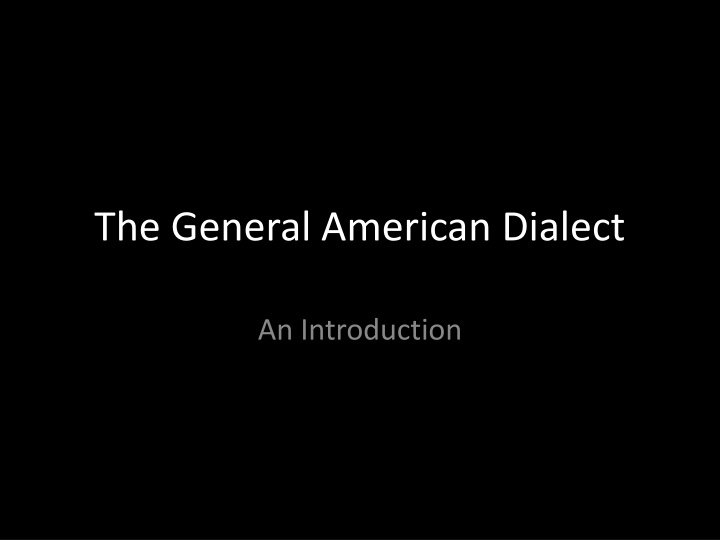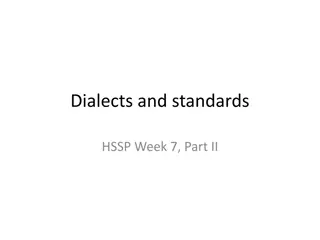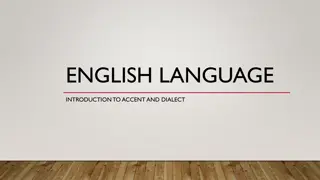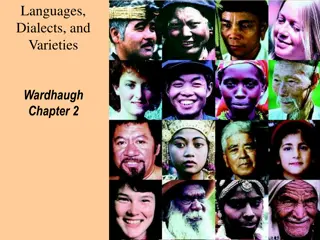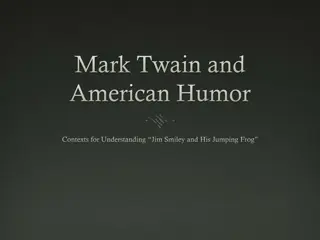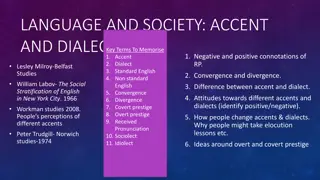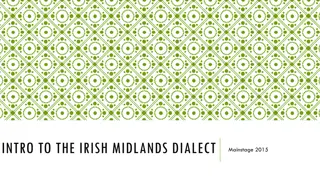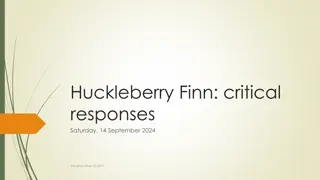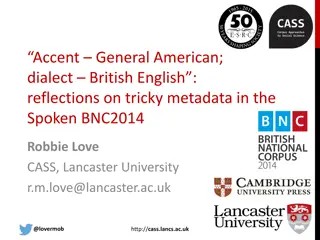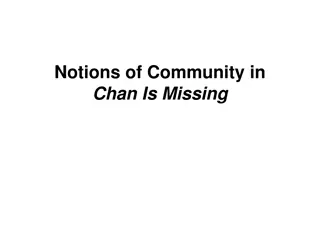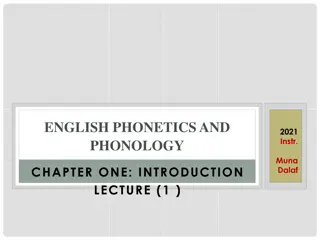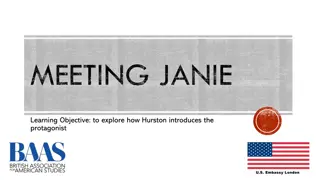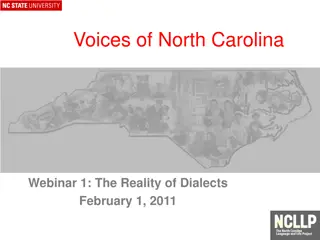Overview of the General American Dialect
The General American Dialect, also known as GenAm, is a widely preferred dialect of English characterized by minor differences in pronunciation compared to regional American accents. It is distinct from Southern, Midwestern, and Northeastern accents and is one of the two global English dialects alongside RP. GenAm features signature sounds like rhoticity, absence of intrusive /r/, and specific vowel pronunciations. Historical influences and regional variations contribute to its unique characteristics in consonants and vowels, making it a prominent form of Standard American English.
Download Presentation

Please find below an Image/Link to download the presentation.
The content on the website is provided AS IS for your information and personal use only. It may not be sold, licensed, or shared on other websites without obtaining consent from the author.If you encounter any issues during the download, it is possible that the publisher has removed the file from their server.
You are allowed to download the files provided on this website for personal or commercial use, subject to the condition that they are used lawfully. All files are the property of their respective owners.
The content on the website is provided AS IS for your information and personal use only. It may not be sold, licensed, or shared on other websites without obtaining consent from the author.
E N D
Presentation Transcript
The General American Dialect An Introduction
What is GenAm? - Network English, Standard American English - Few native speakers, usually acquired. - Minor differences in realization depending on speaker. - Regionally intermediate, different from the regional accents of both the Southern states, the midwest and the US Northeast - One of the 2 globally preferred dialects of English, next to RP.
History Prior to WWII, a variety based on RP considered standard for stage and screen in anglophone North America 1944 John Kenyon & Thomas Knott Pronouncing Dictionary of American English set the standard for GenAm pronunciation. 1940 s -Mid-Atlantic English halfway between RP and GenAm, used on stage and in films.
Signature Sounds Rhoticity (r-coloration) Absence of intrusive /r/ Glottal stop / / / / slightly more open than RP /e/ Difference between short lax / / and long /i:/ BATH and TRAP lexical sets both pronounced with / / No diphtongization of /o/ in GOAT, unlike RP / / /t/ in middle position before vowels realized as tapped of flapped / /
BATH raising the front near-open / / in words such as half, cab, bad, man or lash is raised (Eastern New England) THOUGHT-LOT merger words from both lexical sets pronounced with back open- mid / / (i.e. lawn, on, frog, and John share the same vowel) (Northwest and North-central areas) Threefold homophonization in marry-merry-Mary typical of most GenAm Speakers (for more see Wells 1982, vol. 3. section 6.1.2-6)
Consonants Bilabial Labio- dental Dental Alveo lar Post alveolar Palatal Velar Glottal Plosive p b t d k g Affricate t d Fricative f v s z h Nasal m n Lateral l Approxi mant j ( ) w
Vowels Central Monophtong s Front Back plain rhota cized Close i u Near-close e (e )1 Close-mid o Mid 2 ( ) ~ 3 Open-mid Near-open 1. close-mid /e/ occurs in open syllables only, also occurs as a diphtong in the FACE set 2. always has a centralized back quality preceding / /, in some speakers may be more front, in OH realized as a central / / 3. depends on whether speaker is from an area affected by the THOUGHT-LOT merger
Lexical Sets Lexical Sets representing GenAm vowel pronunciation. FLEECE GOOSE KIT FOOT FACE GOAT NURSE DRESS STRUT THOUGHT TRAP PALM Note In the CLOTH lexical set either / / or / / are used depending on the speaker. GenAm naturally lacks the open back rounded RP vowel / /.
Diphtongs Diphtong Lexical Set e FACE a PRICE CHOICE o GOAT a MOUTH
Merging of vowels before /r/ Vowel in /____r/ Merge as Example words /ir ~ r/ / r/ near, spirit /e r ~ r ~ r/ / r/ fairy, ferry, marry / r/ (START, LOT) bar, sorry / r ~ or/ / r/ war, bore, orange /ur ~ r/ / r/ you re, poor / r ~ r/ / / current, furry
Rhythm, Tempo, Tone & Pitch PITCH: Sentence emphasis added by increasing volume rather than pitch. Higher pitches typically avoided in GenAm RHYTHM: Emphasis is spread more evenly throughout the utterance than in RP TEMPO: of GenAm is usually lower than in RP SENTENCE STRESS: The beginning of the utterance spoken more loudly, volume decreases towards the end TONE: Harder tone, more emphasis on vowels than in RP
References Meier, P. Accents for Stage and Screen Wells, J.C. Accents of English, vol. 3 The Telsur Project by William Labov et al. http://www.ling.upenn.edu/phono_atlas/home. html
